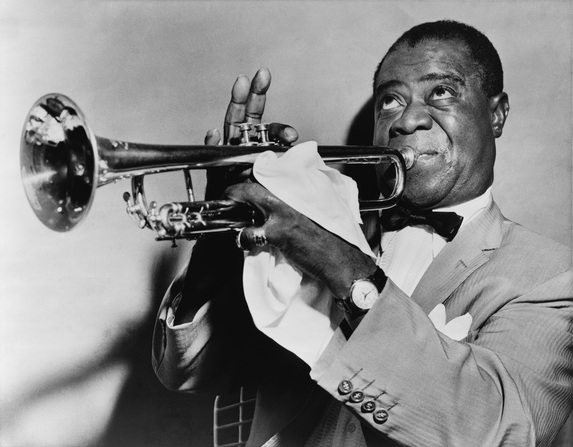Easy there Coltrane, not so fast. Here's my issue with that. Chord scales teach us that we have seven notes to choose from for each chord -- For example, for a Dm7 I have D, E, F, G, A, B, C to choose from and as long as I only play those notes, my improvisation will sound good. Not so! The main point that this method misses is that some notes are more important than others! Not all notes are created equally. In order for melodies to have direction and purpose, we need to stress certain notes more than others. Melodies need destinations! If we are just thinking about choosing from a pool of "correct" notes, our playing sounds aimless and even worse, like we are just running scales up and down our instrument in place of a solo.
The way to start thinking of soloing is as a bunch of destination, or landing points, and then all the stuff in between. As a beginning improviser, we have to start by learning what landing points will sound good. Once you get that down, then you can figure out all the different ways to fill things in. Remember, those destination notes always stay pretty much the same no matter how advanced of an improviser you become, it's all the twists and turns that lead there that gets complex.
And what are those landing points you might ask? Well, it's chord tones! And the extras? That's the chord scales, the chromatic notes, and all that other stuff. But first and foremost, if you are just starting to improvise, work on playing chord tones. Gotta start with the cake before you add the frosting. Or as my good friend and master handy-man Matt would say, "Gotta prime it before you paint it."
Listen to the some of the first jazz soloists and what will you hear them playing a whole lot of? You guessed it -- chord tones! Check out Louis Armstrong, the jazz soloist that paved the way for the rest of us. You'll hear he plays lots of chord tone based solos, especially on his famous Hot 5 and Hot 7 recordings.
And this wouldn't be a Piano Shed entry without a list of things to practice, so here we go!
1. Find tunes that don't have tons of chord changes and that most chords last for at least one measure (a few good ones to start with are Autumn Leaves, Blue Bossa, and a major or minor blues).
2. In the LH play either the Root & 7 or Root & 3rd of the chord. Then, begin to improvise with the chord tones (root, 3rd, 5th, 7th). Try out different orders of notes, different rhythms, multiple octaves. Even though it's just 4 notes, try to make it as musical as possible. Do it out of time to give yourself plenty of time on each chord. Just hang on a chord until you really explore it. When you are done, move on to the next chord.
3. Once you have that down play in time but VERY SLOWLY. Remember to keep the form! That is, make sure you are playing over the chords for as long as they last in the form. Some chords last for one measure, others for 2 measures or some, some for just half a measure. Put a metronome on all 4 beats to keep yourself in check.
4. Gradually increase the tempo and if it's a swing tune, try it with the metronome on beats 2 & 4.
5. Once you get the mechanics of it, keep working to make it as musical as possible. Think about rhythm -- don't forgot to leave space, you can rest for part of the measure or even for whole chords!
6. A last thing to think about is the way you are connecting one chord to the next. This is a HUGE piece of making your improvisation sound fluid. Sometimes, a chord tone of one chord will be a half-step away from a chord-tone in the next chord. These are the juicy pieces of a melody that will help you connect one chord to another (you may hear jazz people call these "guide-tones"). Take note of these and try to repeat them when you find them. For example, in a Dm7, the 7th is a C. If a G7 follows it, the 3rd (a B) is only a half-step down from the C. It's a little confusing to read in words, but try it on the piano and you'll see what I mean.
------------
For the advanced students, once you have the chord tones down here are a few more things to try:
1. Try this method with increasingly complex tunes. Right now, I'm working on "Solar" with one of my students using this method. It's a nice middle ground.
2. Instead of focusing on root, 3rd, 5th, 7th -- start to use the 3rd, 5th, 7th, and 9th as your goal notes.
3. Start to add some filler notes in between the chord tones. Try some notes that are in the key of the song you are playing. Let your ear guide you. Just remember, your goal notes (chord tones) are still the important ones, the filler notes are just leading to a destination.
In the second part of the beginning improvisation series, I'm going to talk about something just as important as chord tones: Embellishing the Melody. Check back for that one, coming soon.
Happy shedding!


 RSS Feed
RSS Feed